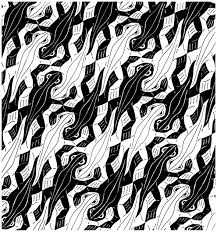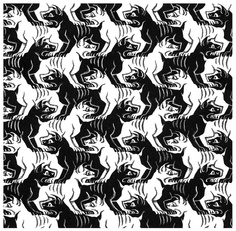

The different shapes can produce so many different tessellations on their own, but there are also many different ways to modify polygons to produce an endless number of different tessellations. The most basic and well known tessellation is a translation tessellation. Some of the others I want to point out are vertex rotation, midpoint rotation/ reflection, and glide-reflection/ half turn. These are all tessellations that M. C. Escher used in his works.


